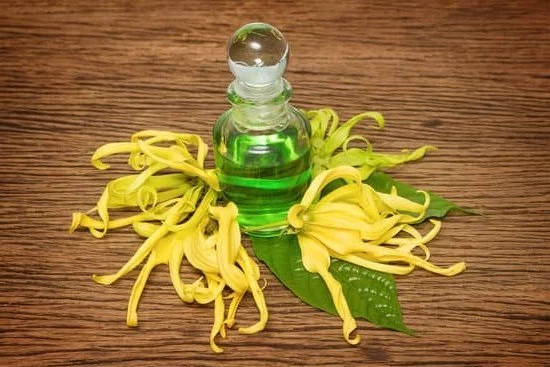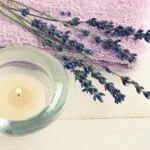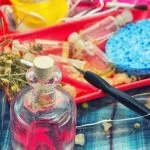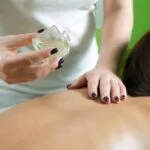Are you curious about how to make your own aromatherapy pads for relaxation and stress relief? Aromatherapy pads are a popular way to enjoy the benefits of essential oils throughout the day, whether at home or on the go.
In this article, we will explore the basics of aromatherapy pads, including their benefits and uses in everyday life. From understanding the therapeutic properties of essential oils to choosing the right materials and creating your own customized pads, we’ve got you covered.
Aromatherapy pads are small fabric pouches infused with essential oils that can be used for a variety of purposes, such as promoting relaxation, reducing stress, and improving sleep quality. These pads can also be personalized with different scents and designs to suit your preferences. Whether you’re new to aromatherapy or a seasoned enthusiast, learning how to make your own aromatherapy pads can be a fun and rewarding DIY project.
In this article, we’ll take you through the step-by-step process of making aromatherapy pads, from selecting the right materials to filling them with essential oils. We’ll also provide tips on safety precautions when using aromatherapy pads and explore various ways to incorporate them into your daily routine.
Whether you’re looking to de-stress at home or create a cozy atmosphere in your car, aromatherapy pads are a versatile tool for enhancing your well-being. Keep reading to discover everything you need to know about making and using these aromatic accessories.
Understanding the Basics
Aromatherapy pads are a popular and convenient way to enjoy the benefits of essential oils throughout the day. Understanding the basics of essential oils and their therapeutic properties is essential when creating these pads. Essential oils are highly concentrated plant extracts that have been used for centuries for their various medicinal and therapeutic properties. Each type of essential oil has its own unique scent, as well as specific benefits for physical and emotional well-being.
When choosing essential oils for aromatherapy pads, it is important to consider their therapeutic properties. For example, lavender oil is known for its calming and relaxing effects, making it ideal for promoting better sleep or reducing stress and anxiety. Peppermint oil, on the other hand, has invigorating and energizing properties, which can help improve focus and mental clarity. Other popular essential oils for aromatherapy pads include eucalyptus, lemon, and chamomile, each with its own distinct fragrance and therapeutic benefits.
It is important to note that some essential oils can cause skin irritation or allergic reactions in some individuals, so it is crucial to perform a patch test before using them on your aromatherapy pads. Additionally, pregnant women or individuals with certain medical conditions should consult with a healthcare professional before using certain essential oils.
| Essential Oil | Therapeutic Properties |
|---|---|
| Lavender | Calming and relaxing; promotes better sleep |
| Peppermint | Invigorating and energizing; improves focus |
| Eucalyptus | Cleansing and refreshing; supports respiratory health |
Choosing the Right Materials
When it comes to making aromatherapy pads, choosing the right materials is essential for ensuring the effectiveness and durability of the pads. The fabric you use will not only determine how well the pad holds the essential oils, but also how comfortable and long-lasting it is. Here are some of the best fabrics and materials for making aromatherapy pads:
- Cotton: Cotton is a popular choice for making aromatherapy pads due to its breathability and absorbent qualities. It is gentle on the skin and allows for easy diffusion of essential oils, making it ideal for use in personal care products such as eye pillows or sachets.
- Silk: Silk is known for its luxurious feel and smooth texture, making it a great option for creating aromatherapy pads. The natural fibers of silk allow for optimal absorption and retention of essential oils, providing a long-lasting scent that can promote relaxation and wellbeing.
- Muslin: Muslin is a lightweight, plain-weave cotton fabric that is versatile and easy to work with. It’s an excellent choice for creating aromatherapy pads due to its softness and breathability, allowing for effective diffusion of essential oils while still being gentle on the skin.
When selecting fabrics for your aromatherapy pads, consider factors such as the intended use of the pad, your personal preferences, and any sensitivities or allergies you may have. Additionally, be sure to choose high-quality fabrics that are durable and capable of withstanding regular use and washing.
In addition to fabric selection, other materials such as thread, sewing needles, and accessories like ribbons or buttons should also be considered when making aromatherapy pads. These elements can enhance both the practicality and aesthetic appeal of your homemade pads. ultimately resulting in a product that meets your needs while also providing a touch of personalized flair.
Step-by-Step Guide
Aromatherapy pads are a convenient and effective way to enjoy the benefits of essential oils throughout the day. Making your own aromatherapy pads allows you to customize the scents and designs to suit your preferences.
Whether you want a calming lavender scent for relaxation or a refreshing citrus scent for energy, creating your own aromatherapy pads is simple and fun. In this step-by-step guide, we will walk you through the process of making your own aromatherapy pads, from choosing the right materials to filling them with essential oils.
Materials Needed
To make your own aromatherapy pads, you will need the following materials:
- Fabric (cotton, silk, muslin)
- Sewing machine or needle and thread
- Scissors
- Essential oils
- Filler material (such as cotton balls or dried herbs)
Step 1: Cutting Fabric
Start by cutting your chosen fabric into small squares or rectangles, depending on the size you want for your aromatherapy pads. It’s best to make them small enough to fit in your hand or pocket for easy use throughout the day.
Step 2: Sewing
Next, fold each piece of fabric in half with the inside facing out and sew along three edges, leaving one edge open to fill with essential oils. If you don’t have a sewing machine, you can also hand-sew the edges using a simple running stitch.
Step 3: Filling With Essential Oils
Once all three sides are sewn, turn the fabric right side out and fill it with a few drops of your chosen essential oil. You can also add filler material like cotton balls or dried herbs to help absorb and release the scent over time.
By following these simple steps, you can create your own personalized aromatherapy pads that can be used for relaxation, stress relief, or an energy boost throughout the day.
Customizing Your Aromatherapy Pads
Choosing the Right Essential Oils
When it comes to customizing your aromatherapy pads, the first step is choosing the right essential oils. Consider the therapeutic properties of different oils and how they can benefit you. For example, lavender is known for its calming and relaxing properties, while peppermint can help with mental alertness and concentration. You can also blend different oils together to create a unique scent that suits your preferences.
Experimenting With Blends
Once you have chosen your essential oils, experiment with different blends to find the perfect scent for your aromatherapy pads. Consider mixing floral scents with citrus or herbal scents for a well-rounded aroma. You can also adjust the ratio of each oil in the blend to create a stronger or milder scent, depending on your preference. Keep track of your favorite blends so that you can recreate them in the future.
Designing Your Pads
In addition to choosing the right scents, consider how you want to design your aromatherapy pads. This could involve selecting fabrics with specific colors or patterns that reflect your personal style. You may also want to add decorative elements such as embroidery or embellishments to make your pads visually appealing. By customizing both the scent and design of your aromatherapy pads, you can create a personalized sensory experience that suits your individual preferences and style.
Safety Precautions
Aromatherapy is a popular and effective way to promote relaxation, reduce stress, and improve overall well-being. However, it is important to use essential oils safely, especially when using them in aromatherapy pads. Proper safety precautions must be taken to ensure the best possible experience and avoid any potential harm.
Dilution of Essential Oils
One important safety measure when using essential oils in aromatherapy pads is to dilute the oils properly. Essential oils are highly concentrated and can cause skin irritation or other adverse reactions if used undiluted.
It is recommended to mix essential oils with a carrier oil, such as almond oil or jojoba oil, before adding them to the pads. A general rule of thumb for dilution is to use 3-5 drops of essential oil per teaspoon of carrier oil for safe application.
Proper Storage
In addition to diluting essential oils, proper storage of aromatherapy pads is crucial for maintaining their effectiveness and ensuring safety. Essential oils should be stored in dark glass bottles in a cool, dry place away from sunlight and heat sources. When not in use, aromatherapy pads should be stored in an airtight container or resealable bag to prevent the evaporation of the essential oils and preserve their scent.
Caution With Certain Oils
It’s also important to exercise caution when using certain essential oils, especially around children, pregnant women, or individuals with specific medical conditions. Some essential oils can be toxic if ingested or may cause respiratory issues if inhaled in large quantities. For example, eucalyptus and rosemary oils should be used sparingly around young children due to their strong aromatic properties that can cause breathing difficulties.
By following these safety precautions when using aromatherapy pads, you can enjoy the benefits of essential oils without any unwanted side effects or risks. It’s important to always read and follow the instructions provided with your chosen essential oils and consult with a healthcare professional if you have any concerns about using them.
Using Aromatherapy Pads
Aromatherapy pads are a versatile and convenient way to enjoy the benefits of essential oils throughout the day. They can be used in a variety of ways to create a calming and relaxing environment, whether at home, work, or while traveling. By incorporating aromatherapy pads into your daily routine, you can experience the therapeutic effects of essential oils wherever you go.
One popular way to use aromatherapy pads is by placing them in drawers or closets. This not only helps to keep your clothes smelling fresh, but also infuses the surrounding area with your chosen scent. Simply tuck a few pads between layers of clothing or linens to enjoy the aromatic benefits of essential oils every time you open the drawer.
Another common use for aromatherapy pads is to place them under pillows or near your sleeping area. Whether you’re looking to promote relaxation, improve sleep quality, or alleviate stress and anxiety, using aromatherapy pads with soothing scents like lavender or chamomile can help create a tranquil atmosphere conducive to rest and relaxation.
Finally, aromatherapy pads can be used in the car to provide natural stress relief during daily commutes or long road trips. Simply tuck a pad into an air vent or place it on your car seat for an easy way to diffuse your favorite essential oil blend and create a calming environment while driving.
| Ways to Use | Description |
|---|---|
| In Drawers/Closets | Keep clothes smelling fresh and infuse surrounding areas with scents |
| Under Pillows/Near Sleeping Area | Improve sleep quality and promote relaxation |
| In the Car | Create a calming environment during commutes or road trips |
Maintenance and Storage
In conclusion, aromatherapy pads can be a wonderful addition to your daily routine, providing countless benefits for relaxation, stress relief, and overall well-being. By understanding the basics of essential oils and choosing the right materials, you can create customized pads that suit your preferences and needs. Following a step-by-step guide, you can easily make your own aromatherapy pads at home, allowing you to personalize them with different scents and designs.
When it comes to using aromatherapy pads, there are various ways to incorporate them into your daily life, such as placing them in drawers, under pillows, or in the car. These pads not only offer a pleasant scent but also provide therapeutic properties that can positively impact your mood and health. It’s important to take proper safety precautions when using aromatherapy pads, including diluting essential oils and ensuring proper storage to maintain their longevity.
By following maintenance and storage tips for caring for your aromatherapy pads, as well as storing them correctly to preserve their scent, you can enjoy the benefits of these pads for an extended period of time. Whether it’s for personal use or as gifts for loved ones, making aromatherapy pads is a rewarding and enjoyable process that allows you to explore different scents and create a calming atmosphere in any environment.
So next time you’re looking for a natural way to enhance relaxation and well-being, consider making your own aromatherapy pads and experience the benefits firsthand.
Frequently Asked Questions
How Do You Make a Scent Pad?
Making a scent pad is relatively simple. Start by choosing a fabric or material that can hold the scent, such as cotton or felt. Then, add a few drops of your chosen essential oil to the fabric and let it dry before using the pad in your desired location.
How Do You Make Essential Oil Pads?
To make essential oil pads, you’ll need a similar approach as making regular scent pads. Choose an absorbent material like cotton or felt, then add a few drops of essential oil to the pad, allowing it to dry before use. These pads are great for adding pleasant scents to drawers, closets, or cars.
How Do You Make Essential Oil Heating Pads?
Essential oil heating pads can be made by infusing a fabric with essential oils and then filling them with materials like rice or flaxseed that can be heated in the microwave. This creates a soothing pad that can be used for muscle aches and pains, providing both warmth and aromatherapy benefits simultaneously.

Are you looking for a natural way to improve your health and wellbeing?
If so, aromatherapy may be the answer for you.





